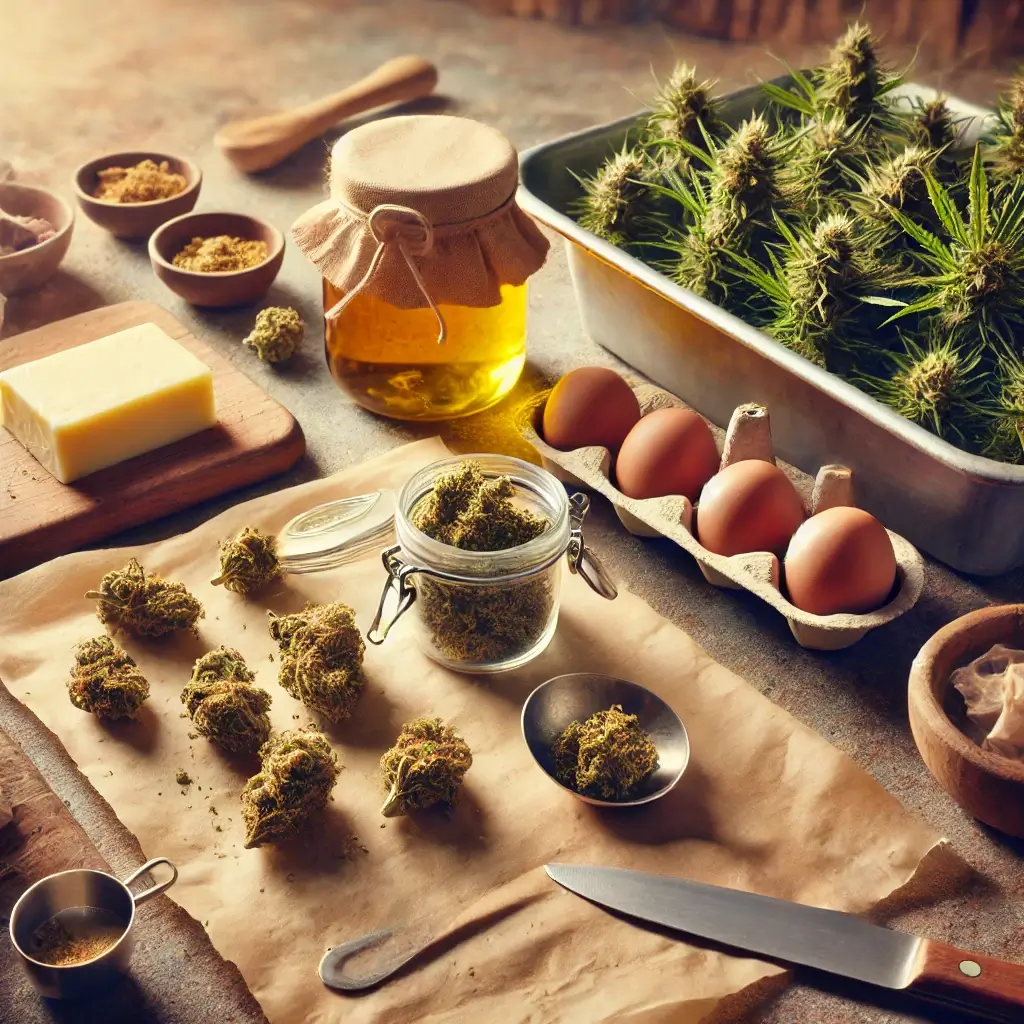Cannabis edibles for medical patients are becoming a preferred method of treatment for many medical cannabis patients. With their discreet consumption and long-lasting effects, edibles provide an effective alternative to smoking or vaping. Particularly for conditions like anxiety, chronic pain, and insomnia, edibles allow patients to benefit from cannabis’ therapeutic properties while avoiding potential lung irritation. Preparing cannabis edibles at home offers the added benefits of controlling dosage and ingredients, ensuring a personalized experience tailored to individual needs. This guide walks readers through the steps of creating medical cannabis edibles at home, highlights current research on their applications, and offers tips for maximizing effectiveness and safety.
Decarboxylation: The Essential First Step
To activate the medicinal compounds in cannabis, decarboxylation is essential. This process uses heat to convert inactive cannabinoid acids like THCA and CBDA into active compounds THC and CBD, which interact with the body’s endocannabinoid system for therapeutic effects.
Steps to Decarboxylate Cannabis
Set the Temperature: Preheat your oven to 240°F (115°C).
Prepare the Cannabis: Lightly grind your cannabis buds to ensure even heating.
Bake: Spread the ground cannabis on a parchment-lined baking sheet and bake for 30–45 minutes, or until golden brown.
Cool and Store: After baking, allow the cannabis to cool completely before storing it in an airtight container for later use.
Skipping decarboxylation process reduces edibles potency.
Dosage: Customizing Edibles for Your Needs
Proper dosage for cannabis treatment is a cornerstone of effective cannabis treatment. Edibles metabolize differently than inhaled cannabis, resulting in delayed but often stronger effects. Careful calculation and incremental dosing can prevent overconsumption and unwanted side effects.
Calculating Potency
Determine the THC/CBD percentage of your cannabis strain (available from dispensary labels).
Multiply the weight of the cannabis by the cannabinoid percentage. For instance, 1 gram (1,000 mg) of cannabis at 20% THC contains 200 mg of THC.
Divide total cannabinoids by number of servings to achieve your desired dose.
For new users, starting with 5–10 mg of THC per serving is advisable.
Simple Recipes for Cannabis-Infused Bases
Cannabis-infused oil and butter foundations are versatile foundations for numerous edible recipes. These infused products allow for precise dosing and can be used in a variety of dishes.
Cannabis Oil
Combine decarboxylated cannabis with a carrier oil (like olive or coconut oil) in a saucepan.
Heat on low for 2–3 hours, ensuring the temperature stays between 160–200°F.
Strain through fine mesh or cheesecloth to remove solids, then store in a labeled container.
Cannabis Butter
Use the same process as for cannabis oil but replace the oil with butter.
Both products should be stored in a cool, dark place to maintain potency.
Current Research and Insights
Research into cannabis edibles continues to expand. A 2023 study in Pain Medicine demonstrated the efficacy of low-dose THC edibles for inflammation and pain without significant side effects. Meanwhile, a Journal of Anxiety Disorders article from 2022 highlighted the use of CBD edibles for managing generalized anxiety disorder, noting improvements in symptom severity and quality of life.
Conclusion
Making cannabis edibles at home for medical treatment empowers patients to create treatments tailored to their medical needs. From decarboxylation to dosing and preparation, following proper techniques ensures safe and effective results. Current research reinforces the potential of edibles as a tool for managing chronic pain, anxiety, and sleep disorders. Always consult a healthcare professional before starting cannabis treatment, and remember to start with low doses to minimize risks. For further information, refer to studies in Pain Medicine and the Journal of Anxiety Disorders for detailed insights into the benefits of medical cannabis.
